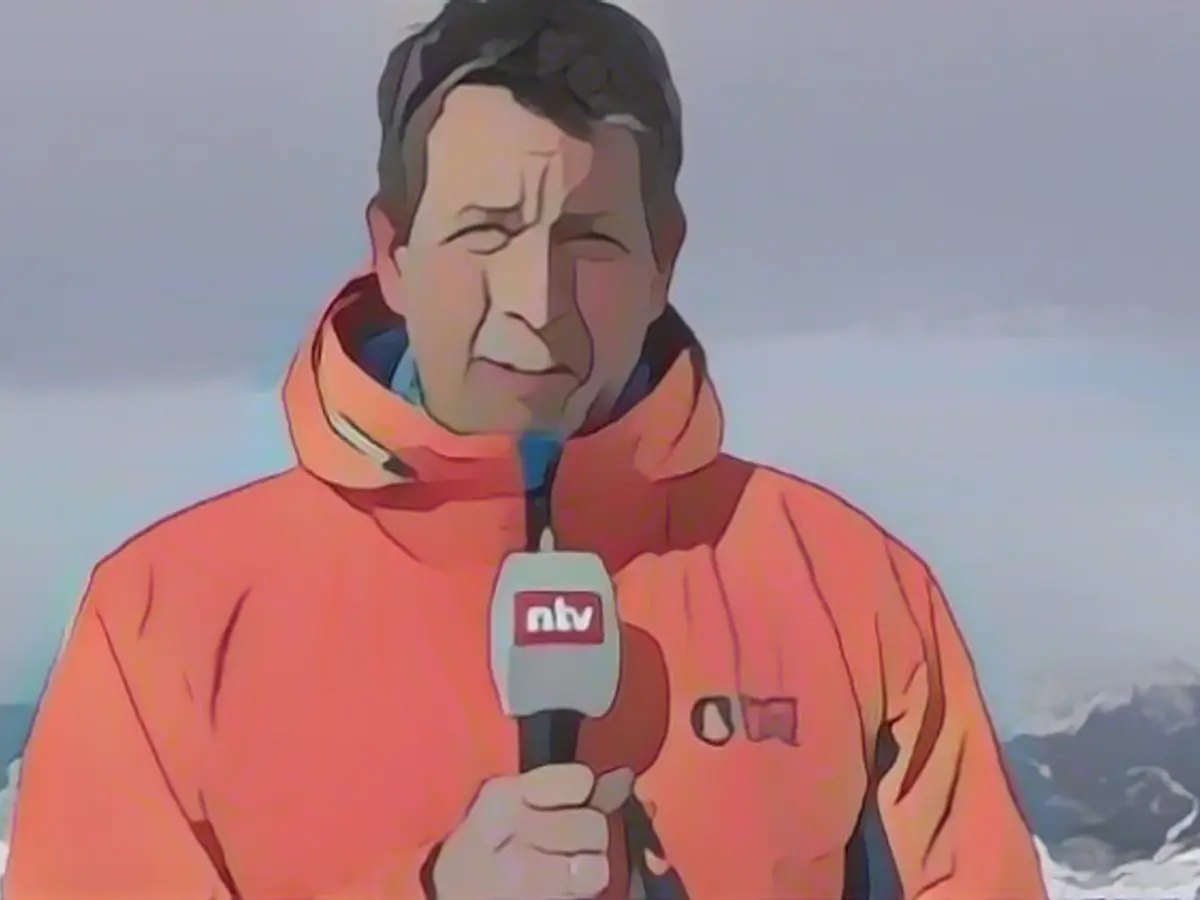Low pressure "Linus" brings snow and gale-force winds
The European weather kitchen is boiling at full speed. Southern Europe is sweating in the recent heat, while the north has been shivering in arctic temperatures for weeks. And Germany is right in the middle of it all - a situation that brings us white surprises as well as stormy prospects.
ntv.de: Rain and storms are unlikely to give us a break this fall - why is that?
Björn Alexander: One of the driving forces are the seas, some of which are still quite warm, which are providing the Atlantic weather system with a relatively large amount of energy. But the weather in Europe also contributes to the intensity of the weather conditions through very large temperature contrasts.
What differences are we talking about?
In some cases, it has been well over 50 degrees Celsius in the last few days. On the one hand, temperatures peaked at around 30 degrees in parts of Spain, within striking distance of the November records. On the other hand, winter has spread across Scandinavia very massively and early in recent weeks.
How cold is it in northern Europe?
In Kiruna, Sweden, for example, the daytime highs were around minus 20 degrees. At night, the values in the region even dropped to around or below minus 30 degrees. Even Oslo reported permafrost on Wednesday - and that doesn't necessarily happen even in the height of winter. In short: in northern Europe, an enormous bubble of cold air is sitting pretty firmly on a thick blanket of snow. And that in turn should make winter fans in this country sit up and take notice.
Why?
Compared to many other years, the cold air is not far away and does not have to be shoveled into Europe from polar latitudes. At the same time, cold air from the high latitudes is not warmed over northern Europe - as in previous years - but reaches us ice-cold.
Are we in for a cold winter?
This at least sets a completely different course for December and for winter in Germany in general. What is important here, however, is the pattern that emerges in the general weather situation. The weather computers have a few very exciting approaches in store for the second half of November and the start of December. The American weather model in particular, which is already looking ahead to the end of the month, repeatedly sees a high potential for the onset of winter in its forecasts due to the extensive development of low pressure over northern Europe.
Is that already certain?
Basically, certainty is a tricky thing when it comes to weather forecasts these days. Unfortunately, such turbulent situations always have greater uncertainties in terms of details and trends. Moreover, when looking at the large-scale temperature distribution, it is also clear that the remnants of summer in the south are just as close and could also quickly spill over to us with a low over Western Europe.
How will thiscontrasting situation affect us in the short term?
With the small but intense low pressure system "Linus" (international name is "Frederico"). It will move eastwards from France across southern Germany on Friday night. Gale-force winds are initially possible in southern Baden, with isolated severe gales of up to 100 kilometers per hour. On the heights of the Black Forest, there is a threat of gale-force gusts, and on open peaks such as Feldberg, Belchen or Herzogenhorn, gale-force gusts of around or over 120 km/h are possible. During the course of the night, the storm field will shift to the east, so that gale-force gusts are also expected in Bavaria. In addition, the Scandinavian winter will be briefly tapped on the back side.
With what consequences?
The development is still uncertain in detail. Nevertheless, the weather computers are indicating increasing snowfall above 400 to 600 meters in the center of the country. In the south, the snow line is expected to drop towards 800 meters - with the risk of slippery snow. In addition to a layer of snow in the mountains and some heavier snowfall in the Alps, the snow may continue to fall regionally. A few wet flakes are definitely conceivable in the passing showers. Especially as temperatures on Friday will also only reach a maximum of 1 to 9 degrees during the day. However, a blanket of snow in the lowlands is unlikely.
Will the southern European warmth play along?
On Sunday, we'll reach the next front of the lows, which is why it will be noticeably milder. With highs of up to 15 degrees. So boredom is not on the cards. But at least there will be a brief intermittent high in between.

What will the intermediate high bring us?
Saturday will bring the last snow or sleet showers in the east. Otherwise, however, it will be friendly and dry. It will be between 2 and 10 degrees. Only later will new rain follow from the west, which will spread eastwards on Sunday and may initially be mixed with snow in the east. Afterwards, the snow line will rise quickly to between 4 and 15 degrees.
And in the new week?
The changeable and sometimes windy to stormy weather will remain. Temperatures on Monday will be a more even 6 to 13 degrees. On Tuesday, the precipitation will be pushed southwards by a north-easterly wind and the snow line will drop again. At 4 to 11 degrees, it will be colder again and nicer on Wednesday.
How long will the improvement in the weather last?
Probably until Thursday. Then the weather computers predict renewed precipitation. This time from the northwest, which could bring cooler air with highs of 3 to 9 degrees and snow in the low mountain ranges.
- Given the current weather patterns, international meteorological agencies are closely monitoring the development of extreme weather events, such as the approaching 'Linus' low pressure system, which is predicted to bring snow and gale-force winds across several European countries, including Germany.
- Björn Alexander, a meteorologist at ntv.de, explains that the intense weather conditions in Europe are being driven by various factors, including the energy provided by still warm Atlantic seas and significant temperature contrasts across the continent.
- As we move into December, meteorologists are expressing interest in potential winter weather patterns, with some models indicating a high likelihood of winter onset due to the extensive development of low pressure over northern Europe, which could bring more extreme weather events like snow and gale-force winds to regions like Germany, as previously observed with 'Linus'.
Source: www.ntv.de






